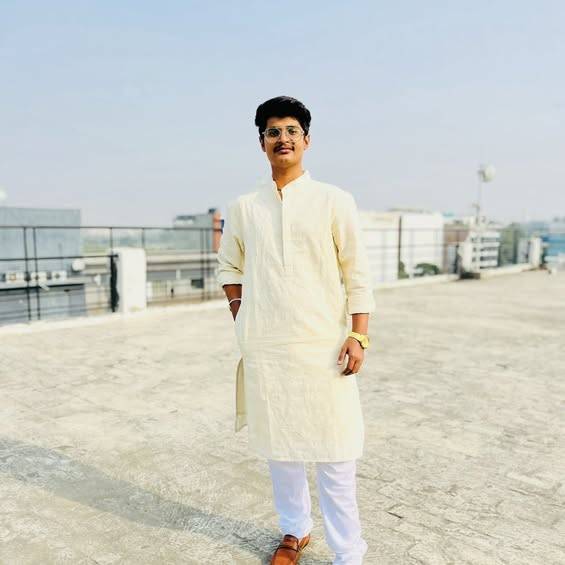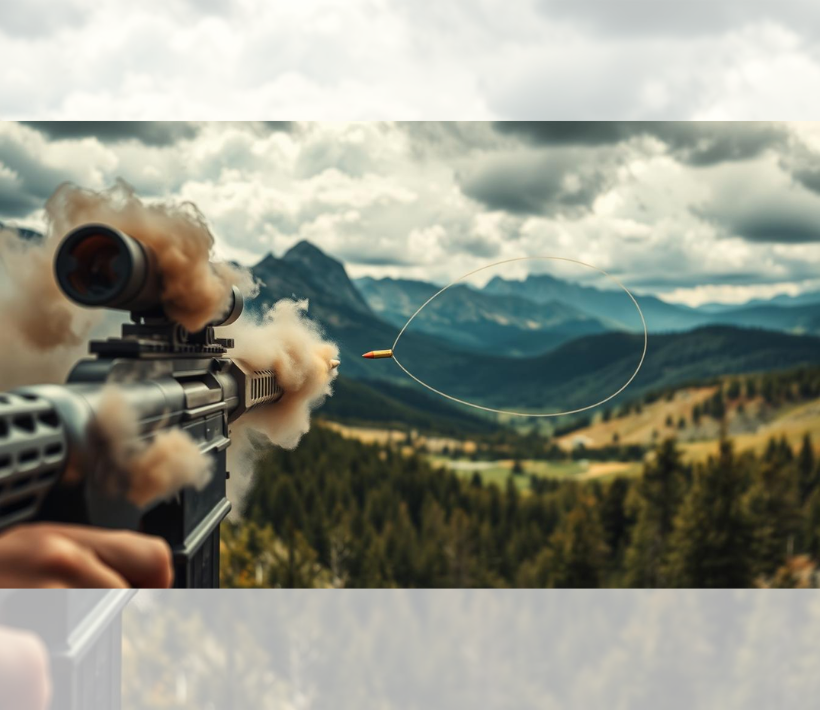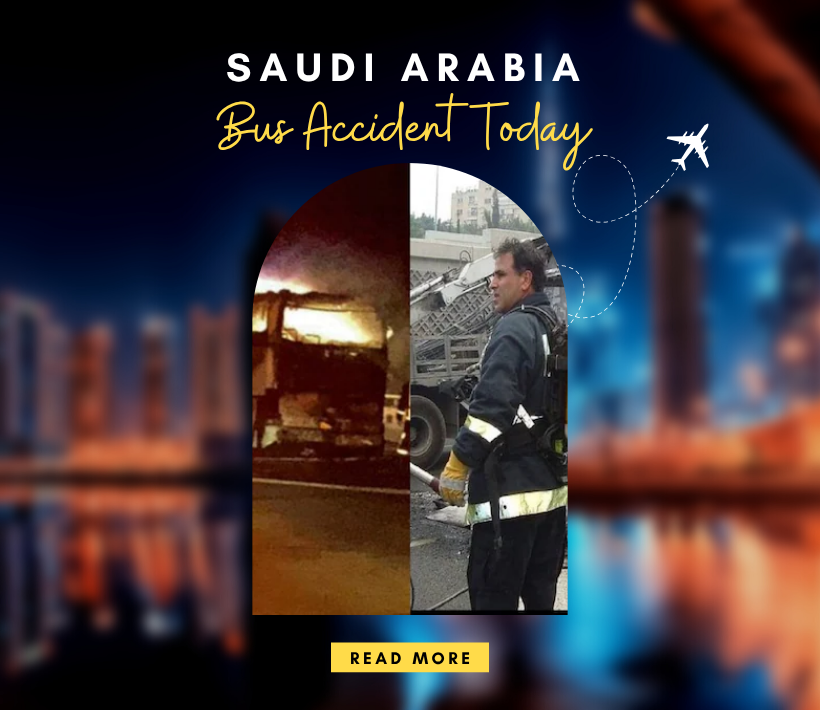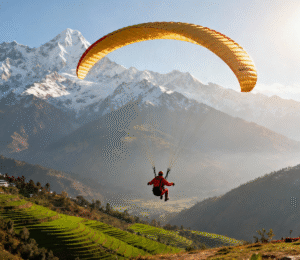How Far Can a Centerfire Bullet Travel?
You might be surprised to learn that a centerfire bullet can travel over a mile when fired from a high-powered rifle. The distance a centerfire bullet can cover is influenced by several factors. These include the type of ammunition, the rifle’s caliber, and environmental conditions.

The travel distance of centerfire ammunition is a critical consideration for shooters, hunters, and those concerned with safety and ballistics. Understanding the capabilities of your firearm is essential for responsible use.
Key Takeaways
- Centerfire bullets can travel significant distances when fired from appropriate firearms.
- The distance is affected by the ammunition type, rifle caliber, and environmental factors.
- Understanding the travel distance of centerfire ammunition is crucial for safety and effective shooting.
- Different rifles and calibers have varying capabilities in terms of bullet travel distance.
- Environmental conditions play a significant role in determining the actual distance a bullet can travel.
The Basics of Centerfire Ammunition
Centerfire ammunition is the go-to for modern guns because it’s reliable and versatile. You might be curious about what makes it different. It has a primer in the middle of the cartridge. This primer is hit by a firing pin to start the propellant.
What Makes Centerfire Bullets Different
Centerfire bullets stand out because of their strong design and ability to be reloaded. This makes them great for many shooting needs, from hunting to competitive events. The centerfire calibers come in many types, each with its own ballistic performance. This variety makes them perfect for different tasks.
Common Centerfire Calibers Overview
Popular centerfire calibers include the .223 Remington, .308 Winchester, and .30-06 Springfield. These are favorites among hunters and target shooters. They’re known for their caliber distance capabilities and effectiveness. Knowing about these calibers can help you improve your shooting.

The Science of Ballistics and Bullet Flight
To understand how far a centerfire bullet can go, you need to learn about ballistics. Ballistics is the study of how projectiles, like bullets, move. Knowing ballistics helps shooters figure out how far their bullets will travel.
Understanding External Ballistics
External ballistics looks at a bullet’s flight from when it leaves the barrel to when it hits the target. Several things affect this, like gravity, air resistance, and wind. Gravity pulls the bullet down, and air resistance slows it. Knowing these forces helps predict where the bullet will go.

Trajectory Fundamentals for Shooters
A bullet’s trajectory is its path through the air. Shooters must understand this to hit their targets accurately at different distances. The bullet’s initial speed, weight, and its movement through the air all play a part. Using ballistic calculators and tables helps shooters adjust their aim.
| Factor | Effect on Trajectory | Importance |
|---|---|---|
| Initial Velocity | Higher velocity results in a flatter trajectory | High |
| Bullet Weight | Heavier bullets are less affected by wind | Medium |
| Aerodynamic Characteristics | Better aerodynamics result in less air resistance | High |
How Far Can a Centerfire Bullet Travel: Real Numbers
The distance a centerfire bullet can travel changes with the caliber and ammo type. Knowing these distances is key for safety and success.
Maximum Theoretical Distances by Caliber
Different calibers have their own max distances. For example:
- .22 caliber: Up to 1.5 miles (2.4 km)
- .308 caliber: About 3 miles (4.8 km)
- .50 caliber: Can go over 5 miles (8 km)

Effective Range vs. Maximum Range
It’s important to know the difference between a bullet’s max range and effective range. The max range is how far a bullet can go. The effective range is how far it can hit a target accurately.
For instance, a .308 caliber rifle might reach 3 miles max. But for hunting, its effective range could be about 800 yards. This depends on the shooter’s skill and the rifle’s performance.
Key considerations for effective range include:
- Muzzle velocity
- Bullet weight and design
- Environmental conditions
Knowing these helps you choose the right shooting range.
Key Factors That Determine Bullet Travel Distance
Several key factors determine how far a centerfire bullet can travel. These factors affect both its range and accuracy. It’s important for shooters to understand these factors to predict and achieve specific distances.
Bullet Weight and Design Impact
The weight and design of a bullet greatly influence its travel distance. Heavier bullets keep their speed better over long distances because of their momentum. The bullet’s shape and construction also matter, with streamlined bullets facing less air resistance and traveling farther.
Muzzle Velocity and Energy Transfer
Muzzle velocity, or the speed at which a bullet leaves the barrel, is crucial. Bullets with higher muzzle velocities travel farther because they have more energy. As the bullet moves, it loses energy to the air, slowing it down. The bullet’s design and velocity affect how fast this energy loss happens.
Firearm Specifications That Matter
The specifications of the firearm used can also impact bullet travel distance. Two key aspects are barrel length and rifling.
Barrel Length Effects
A longer barrel typically results in a higher muzzle velocity. This is because the explosive gases have more time to accelerate the bullet. This increased velocity can lead to a longer travel distance.
Rifling and Stabilization
Rifling, the spiral grooves cut into the barrel, imparts a spin to the bullet. This spin stabilizes it in flight. Proper stabilization is essential for maintaining the bullet’s trajectory and ensuring it travels as far as intended.
| Factor | Impact on Distance | Reason |
|---|---|---|
| Bullet Weight | Heavier bullets travel farther | Higher momentum |
| Muzzle Velocity | Higher velocity increases distance | More initial kinetic energy |
| Barrel Length | Longer barrels increase distance | Higher muzzle velocity |
| Rifling | Proper rifling stabilizes the bullet | Maintains trajectory |

How to Account for Environmental Conditions
Knowing how the environment affects bullet trajectory is key for long-range shooting. You must look at several important factors. This helps you adjust your aim and hit your target.

Measuring and Adjusting for Wind
Wind can change a bullet’s path. To adjust for wind, you need to know its speed and direction. A wind meter or anemometer can measure wind speed well.
After getting this info, you can make wind deflection corrections to your aim.
Temperature and Humidity Compensation
Temperature and humidity also impact bullet distance. Higher temperatures can make your firearm’s muzzle velocity go up. Humidity changes air density, affecting bullet drag.
To compensate, understand how these factors work together. Use ballistic software to make these adjustments.
Altitude and Pressure Considerations
Altitude and atmospheric pressure are key for bullet travel. At higher altitudes, air pressure is lower. This can make the bullet travel farther with less drag.
But, you need to adjust your aim for these changes. Knowing the relationship between altitude and air pressure is crucial for accurate shooting.
By considering these environmental factors and making the right adjustments, you can greatly improve your long-distance shooting accuracy.
Comparing Popular Centerfire Calibers and Their Ranges
It’s important to know how different centerfire calibers work. This knowledge helps both new and experienced shooters. The right caliber depends on what you’re using it for, like self-defense, hunting, or competitive shooting.

Handgun Calibers and Their Limitations
Handgun calibers vary in power, range, and how much they kick back. Calibers like 9mm, .40 S&W, and .45 ACP are popular. They offer a good mix of stopping power and ease to handle.
9mm, .40 S&W, and .45 ACP
These calibers are favorites for self-defense. The 9mm is loved for its low kick and big magazine capacity. The .40 S&W strikes a balance between power and kick. The .45 ACP packs a punch but kicks back more.
Magnum Revolver Rounds
Magnum revolver rounds, like the .357 Magnum and .44 Magnum, have more power. They’re good for hunting and self-defense. They can hit targets farther than regular handgun calibers.
Common Rifle Calibers and Their Capabilities
Rifle calibers are made for shooting far away and have more power than handguns. Calibers like .223/5.56mm NATO, .308/7.62mm NATO, and .30-06 Springfield are popular. They’re good for many uses because of their versatility and effectiveness.
.223/5.56mm NATO
The .223/5.56mm NATO is great for hunting small game and military use. It has low kick and high speed.
.308/7.62mm NATO
The .308/7.62mm NATO is a top pick for hunting big game. It’s also used by military and law enforcement. It balances power and kick well.
.30-06 Springfield
The .30-06 Springfield is a classic for hunting many types of game. It has a good mix of power and kick.
Specialized Long-Range Calibers
For shooting far away, calibers like .300 Winchester Magnum and .338 Lapua Magnum are best. They’re accurate and powerful at long distances.
.300 Winchester Magnum
The .300 Winchester Magnum has a flat trajectory and lots of kinetic energy at long ranges. It’s great for hunting big game.
.338 Lapua Magnum
The .338 Lapua Magnum is for extreme long-range shooting. It’s very accurate and has enough power for targets over 1,000 yards.
How to Calculate and Predict Bullet Travel Distance
Technology has made it easier to predict where a bullet will go. This is key for hitting your target, whether you’re hunting or competing. Knowing how far a bullet will travel is essential for accuracy.
Using Ballistic Calculator Apps and Software
Ballistic calculators have changed the game for shooters. These apps and software consider things like how fast the bullet is going and its weight. They also look at the weather to give you the best guess on where the bullet will land.
When using these tools, make sure to enter the right information. This way, you’ll get the most accurate results. Many of these tools can adjust for changes in the environment, making them even more useful.
Key Features to Look for in Ballistic Calculators:
- Customizable inputs for bullet type, weight, and muzzle velocity
- Adjustments for environmental factors like wind, temperature, and humidity
- Output in MOA (Minute of Angle) or MIL (Milliradian) for easy scope adjustments
Reading and Applying Ballistic Tables
Ballistic tables are another way to figure out where a bullet will go. They have pre-calculated data for different ranges and conditions. To use these tables well, you need to know how to read and apply the information to your shooting situation.
| Range (yards) | Bullet Drop (inches) | Wind Deflection (inches) | Velocity (fps) |
|---|---|---|---|
| 100 | 0 | 0 | 2800 |
| 200 | -2.5 | 1.2 | 2500 |
| 300 | -7.8 | 3.5 | 2200 |
By mastering these tools, shooters can hit their mark more accurately, even at long distances.
Essential Safety Protocols for Long-Range Shooting
Safety is key in long-range shooting. Shooters must follow specific rules to avoid accidents. It’s not just about hitting the target. It’s also about keeping everyone safe.
Establishing Adequate Backstops and Safety Zones
Setting up good backstops and safety zones is crucial. A backstop catches bullets, keeping them from going too far. Proper backstop design depends on the ammo and target distance. Safety zones are areas where you can’t shoot, keeping people safe.
- Clear boundaries marked with visible signage
- Restricted access to authorized personnel only
- Regular inspections to ensure compliance with safety standards
Understanding Your Legal and Ethical Responsibilities
Long-range shooters must know their legal and ethical responsibilities. This means following local gun laws and caring about the environment. They should also respect the rights of those around them.
| Legal Consideration | Description |
|---|---|
| Firearm Laws | Compliance with local and national firearm regulations |
| Environmental Impact | Awareness of noise pollution and land use regulations |
| Property Rights | Respect for private property and neighboring land uses |
Following these safety rules and knowing their duties helps long-range shooters. They ensure a safe and fun experience for everyone.
Developing Your Long-Range Shooting Skills
Mastering long-range shooting needs the right gear and lots of practice. You must know the basics of both.
Essential Equipment for Distance Shooting
The right tools are key for long-range shooting. You’ll need a top-notch rifle, a strong scope, and the right ammo. For example, a .308 Winchester or .300 Winchester Magnum rifle is great for long shots because of their accuracy and range.
| Equipment | Description | Importance |
|---|---|---|
| Rifle | High-quality rifle suitable for long-range shooting | High |
| Scope | Robust scope with adjustable magnification and clear optics | High |
| Ammunition | Match-grade ammunition designed for long-range accuracy | High |
As a famous shooter said, “The right gear can really boost your long-range shooting.”
“A good rifle and scope can make a big difference in your accuracy. But don’t forget to practice a lot to keep getting better.”
Training Techniques to Improve Accuracy
To get better at long-range shooting, you need to practice a lot. Techniques like controlled breathing, steady aim, and follow-through are crucial. Also, using ballistic calculators can help you adjust for things like wind and elevation.
Regular practice and training are key to getting better at long-range shooting. With the right gear and good training, you can really improve your accuracy.
Practical Applications of Long-Range Ballistics Knowledge
Whether you’re hunting or in competitive shooting, knowing long-range ballistics is key. It helps you understand how to adjust for different conditions. You also learn about your firearm and ammo’s limits, making your shots more accurate.
Hunting Applications and Ethical Shot Placement
In hunting, knowing long-range ballistics is crucial for ethical shots. Accurate shooting means a quick, humane kill. Hunters must think about wind, bullet drop, and animal movement for a successful shot.
By using long-range ballistics, hunters can hit their targets from farther away. This makes their shots more precise.
Competitive Shooting Considerations
In competitive shooting, long-range ballistics knowledge can make all the difference. Shooters need to predict bullet paths and adjust for the environment. Ballistic calculators and tables are vital tools for fine-tuning their aim.
Mastering long-range ballistics gives competitive shooters an edge. They can outperform their opponents with precise shots.
Common Myths About Centerfire Bullet Travel Debunked
The distance a centerfire bullet can travel is often wrong in movies and TV. If you shoot or just like guns, knowing the truth about bullet travel is key. It helps you make smart choices.
Hollywood vs. Reality: Media Misconceptions
Movies and TV shows make guns look way more powerful than they are. For example:
- They show snipers hitting targets from far away without showing the skill or tech needed.
- TV shows let bullets go around obstacles or through walls without losing speed.
These false images lead to unrealistic expectations. They make people think guns can do more than they really can.
Scientific Facts Every Shooter Should Know
To really get how far centerfire bullets can go, you need to know the science:
- Ballistic Coefficient: This tells you how well a bullet fights air resistance. A higher number means it’s better at cutting through air.
- Muzzle Velocity: The speed a bullet leaves the barrel affects how far and straight it goes.
Experts say, “Knowing about ballistic coefficient and muzzle velocity is key. It helps predict how far and straight a bullet will go.”
By understanding these scientific points, shooters can see what their guns can really do. This clears up common myths and wrong ideas.
Conclusion
You now know a lot about how far centerfire bullets can go. The distance they travel depends on several things. These include the caliber, bullet design, muzzle velocity, and the environment.
Centerfire bullets travel different distances based on their caliber. Some rifle calibers can go over 3,000 yards. It’s important to know the difference between effective and maximum range for safe and accurate shooting.
Long-range shooting is more than just knowing your gun’s capabilities. You also need to consider wind, temperature, humidity, and altitude. Using apps and software can help improve your accuracy.
As you get better at long-range shooting, always remember safety and ethics. Make sure you have a safe place to shoot and know your legal rights. This is key to responsible shooting.
FAQ
How far can a centerfire bullet travel?
The distance a centerfire bullet can go depends on many things. These include the caliber, bullet design, and how fast it leaves the gun. Also, the weather matters. Generally, they can go several miles. Some can even go over 5 miles.
What is the maximum theoretical distance a centerfire bullet can travel?
The farthest a bullet can go varies by caliber. For example, the .300 Winchester Magnum and .338 Lapua Magnum can go over 3 miles. But, how far it really goes is usually less.
How does bullet weight and design affect travel distance?
Heavier bullets with a sleek design travel farther. This is because they face less air resistance. The shape, size, and weight of the bullet all affect how far it goes.
What role does muzzle velocity play in determining bullet travel distance?
The speed at which a bullet leaves the gun is key. Faster bullets can travel farther. This is because they have more energy to push through the air.
How do environmental conditions like wind, temperature, and humidity affect bullet travel?
Weather can change how a bullet flies. Wind can push it off course. Temperature and humidity can change the air’s density, affecting the bullet’s path.
Can ballistic calculators accurately predict bullet travel distance?
Yes, tools like ballistic calculators can give good estimates. They consider things like caliber, speed, and weather.
What safety considerations are essential for long-range shooting?
Safety is crucial. Make sure you have a safe area to shoot into. Know your legal and ethical limits. Always be aware of your surroundings.
How can I improve my long-range shooting accuracy?
Use the right gear and practice. Learn about your bullet’s ballistics. Adjust for weather. Regular practice helps a lot.
What are some common myths about centerfire bullet travel?
Some myths exaggerate how far bullets can go. Media often gets it wrong. The real distance depends on air resistance, gravity, and bullet design.
How do different calibers compare in terms of range and capability?
Different calibers have different ranges. Handgun calibers have shorter ranges than rifle calibers. Special calibers like .300 Winchester Magnum and .338 Lapua Magnum can go farther.

Hi, I am Raghav Ahuja a curious explorer, travel enthusiast, and the voice behind Travel The World Today. I believe in discovering the beauty of every destination without breaking the bank. Through my journeys, I share tips, stories, and travel guides to help you explore the world on a budget. Whether you’re a solo adventurer, a family traveler, or just planning your next escape, I’m here to inspire and guide you every step of the way.







Post Comment